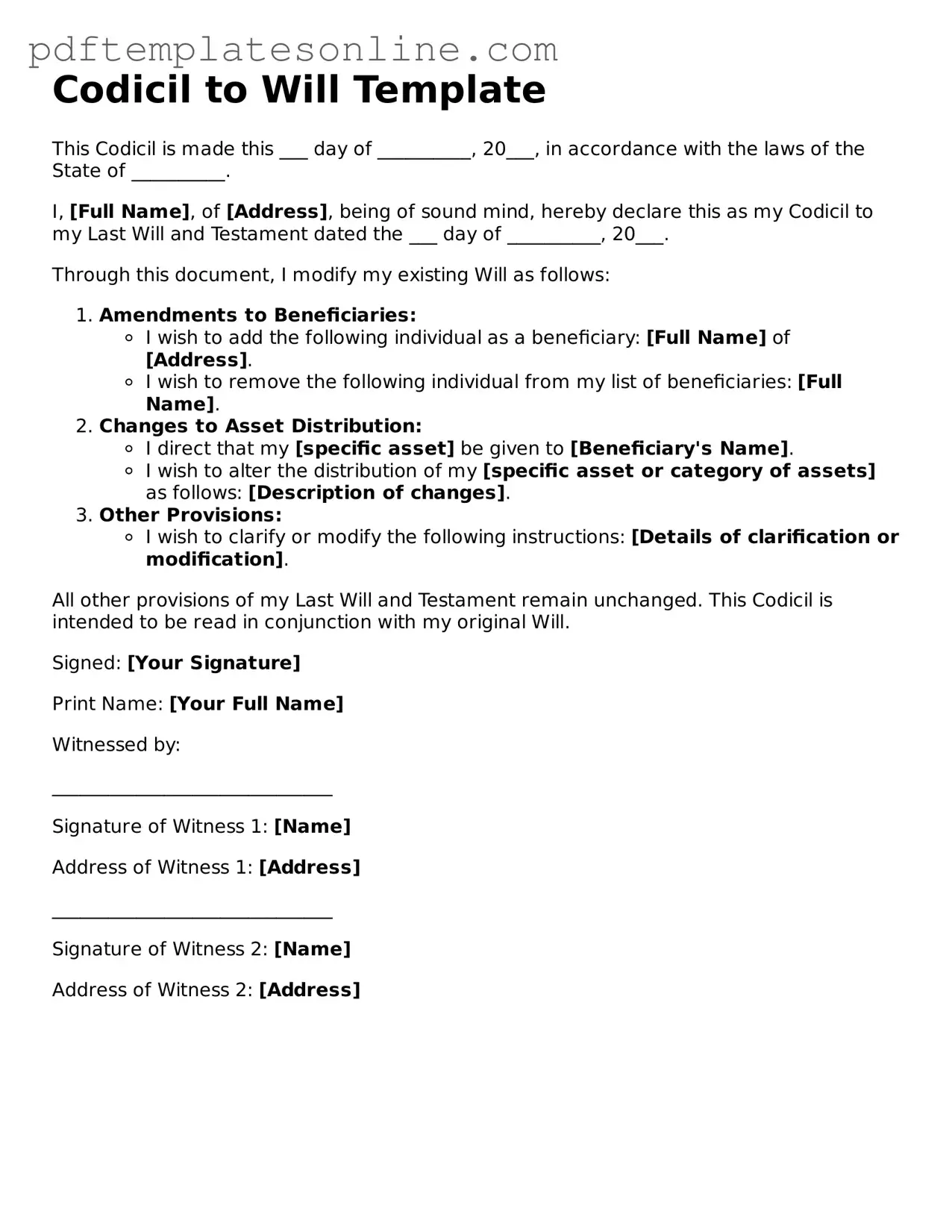When filling out a Codicil to Will form, many people inadvertently make mistakes that can lead to confusion or even legal issues down the line. One common error is failing to properly identify the original will. It’s crucial to reference the original document accurately, including the date it was signed. Without this information, the codicil may not be valid.
Another mistake is not clearly stating the changes being made. A codicil should specify exactly what is being added, removed, or altered in the original will. Vague language can create ambiguity, which may lead to disputes among heirs or beneficiaries.
Many individuals overlook the importance of signatures. A codicil must be signed by the person making the changes, just like the original will. Some people mistakenly think that a witness is not required, but having one can provide additional validation and help avoid future challenges.
Not dating the codicil is another frequent oversight. A date provides context and clarity regarding when the changes were made. This can be particularly important if there are multiple codicils or if the original will is contested.
People often forget to keep the codicil with the original will. If the codicil is stored separately, it may not be discovered when needed. Keeping all documents together ensures that your wishes are clear and accessible.
Another common mistake is failing to notify relevant parties. Once a codicil is executed, it’s wise to inform executors, beneficiaries, and any other interested parties. This helps ensure everyone is aware of the changes and can act accordingly.
Some individuals may not realize that a codicil can only modify certain aspects of a will. Attempting to create an entirely new will through a codicil can lead to complications. It’s important to understand the limitations of what a codicil can achieve.
Relying on outdated forms is another pitfall. Laws and regulations can change, so using the most current version of the codicil form is essential. This helps avoid issues related to outdated legal language or requirements.
Lastly, many people do not seek legal advice when necessary. While it’s possible to fill out a codicil on your own, consulting with a legal professional can provide peace of mind. They can help ensure that the document is valid and reflects your intentions accurately.
